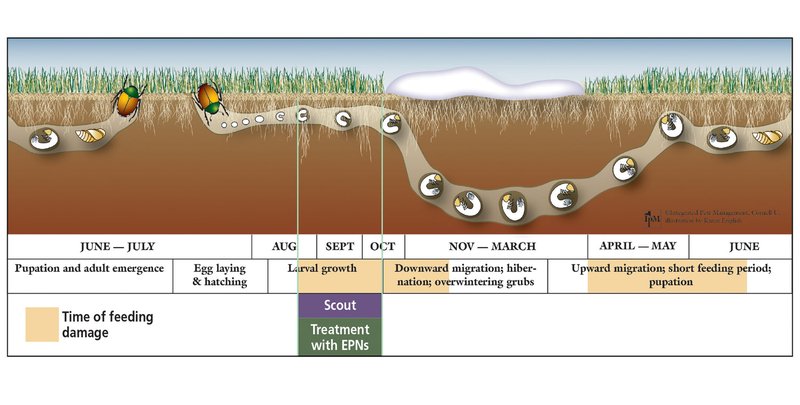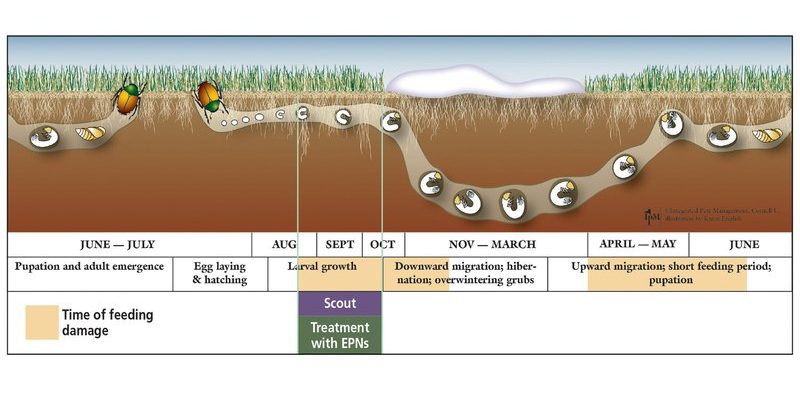
So, how do you figure out what’s acceptable when it comes to grub worms? The answer isn’t straightforward. Just like some people can handle spicy food better than others, lawns have different tolerances to these critters. Let’s dive a bit deeper into what that means, how to assess your lawn’s tolerance, and the best practices for maintaining a healthy yard.
What Are Grub Worms?
Grub worms are essentially the juvenile stage of various beetles, usually the Japanese beetle or the European chafer. They tend to feast on the roots of grass, which can lead to an unhealthy lawn. Grubs are small, typically white or cream-colored, and about the size of your pinky nail. You might be wondering why these little critters matter. Well, as they munch away, they can damage your grass, causing brown patches and making your lawn look less than its best.
When you spot grubs in your yard, it’s important to check how many are actually present. A just few can often be tolerated without causing serious harm, but once their numbers exceed a certain threshold, it’s time to step up your lawn care game. It’s like managing a group of unruly children at a party—if they’re having fun, it’s fine, but if they’re throwing cake, you might have to intervene!
Assessing Grub Worm Tolerance Levels
Understanding your lawn’s tolerance level to grub worms largely depends on the species of grass you have and your overall lawn care practices. Generally, a healthy lawn can tolerate a few grubs per square foot. Here’s a simple way to assess your lawn:
1. **Visual Inspection**: Check for brown patches, and see if the grass pulls up easily. If it does, that could be a sign of root damage from grubs.
2. **Counting Grubs**: You can do a simple test. Cut out a square foot of sod, dig 3-4 inches deep, and check for grubs. If you find fewer than 10, your lawn is likely okay. If you find more, it’s time to take action.
3. **Monitor Grass Health**: Healthy grass can recover better from grub damage. If you’re maintaining a robust lawn, it can handle a few grubs better than a stressed lawn.
Knowing how to assess your lawn’s grub tolerance helps you decide whether to intervene. Remember, prevention is always easier than a cure!
Reasons for Grub Infestations
Grub worm infestations can occur for a variety of reasons. Here are some common culprits:
- Overwatering: Excess moisture can attract beetles and encourage them to lay eggs in your yard.
- Lack of Natural Predators: Birds and beneficial insects naturally keep grub populations in check. If those predators are absent, grubs can multiply unchecked.
- Unhealthy Soil: Poor soil health can lead to a stressed lawn, making it more susceptible to grub damage.
Next time you see your lawn looking a little worse for wear, consider these factors. Sometimes, it’s not just about the grubs, but about the lawn environment itself.
How to Manage Grub Worm Populations
If you’re facing a grub worm issue, don’t panic—there are several approaches to manage them effectively. Here are some strategies:
1. **Cultural Practices**: Start by improving your lawn’s overall health. Aeration, overseeding, and proper watering can help your grass recover from minor infestations. It’s like giving your lawn a little spa day!
2. **Biological Control**: Introducing beneficial nematodes can be a game-changer. These tiny worms hunt down grubs and reduce their populations naturally. You might find this strategy appealing if you’re looking for an eco-friendly solution.
3. **Insecticides**: If you’ve got a serious infestation, you might need to consider treatments. Products like **Granular Insecticides** and **Liquid Treatment Insecticides** can be effective but always follow label instructions closely.
Each of these methods has its pros and cons, so choose wisely based on your situation. It’s about finding the right balance to keep your lawn healthy without going overboard.
Preventing Grub Worm Outbreaks
The best way to handle grub worms is to **prevent them** from infesting your lawn in the first place. Here are some tips:
- Monitor Regularly: Keep an eye on your lawn’s health and watch for early signs of pests.
- Encourage Healthy Soil: Regularly aerate and amend your soil to promote healthy grass growth.
- Choose Grub-resistant Grass Varieties: Some grasses are less attractive to beetles. Doing a bit of research to choose the right variety for your region can pay off.
Preventing grubs is like locking the door before the party starts. It’s always better to take precautions than to deal with the aftermath.
Recognizing When to Let Go of Tolerance
It’s essential to know when a grub worm presence becomes too much. Here are signs that it’s time to take action:
– Brown patches that don’t improve with watering or fertilization.
– Areas where grass easily pulls up, indicating root damage.
– Increased presence of birds or other wildlife, which might indicate a higher grub population.
If you’re noticing these signs, your lawn has likely hit its grub tolerance limit, and it’s time to step in before more serious damage occurs.
The Long-term View: Building a Healthy Lawn Ecosystem
Ultimately, the goal is to create a sustainable lawn ecosystem that can handle a few grubs without faltering. Here’s what you can do for long-term health:
1. **Healthy Lawn Care Routine**: Maintain a routine that includes aeration, proper watering, mowing at the correct height, and using organic fertilizers. A well-nourished lawn is less susceptible to pests.
2. **Soil Testing**: Conduct regular soil tests to ensure nutrients are balanced. Knowing what your soil needs helps you provide the best care.
3. **Diverse Plant Life**: Consider planting a variety of grasses or native plants. Biodiversity can help keep pests in check naturally.
By taking a proactive approach, you’re setting your lawn up for success, helping it thrive through all kinds of conditions.
In conclusion, understanding **grub worm tolerance levels** in lawn maintenance is all about balance. By assessing your lawn’s health, managing any infestations wisely, and adopting preventative measures, you can enjoy a lush, green lawn all season long. Think of it as nurturing a garden—you don’t just water it once and forget; it requires ongoing care and attention. So get out there, and give your lawn the love it deserves!

